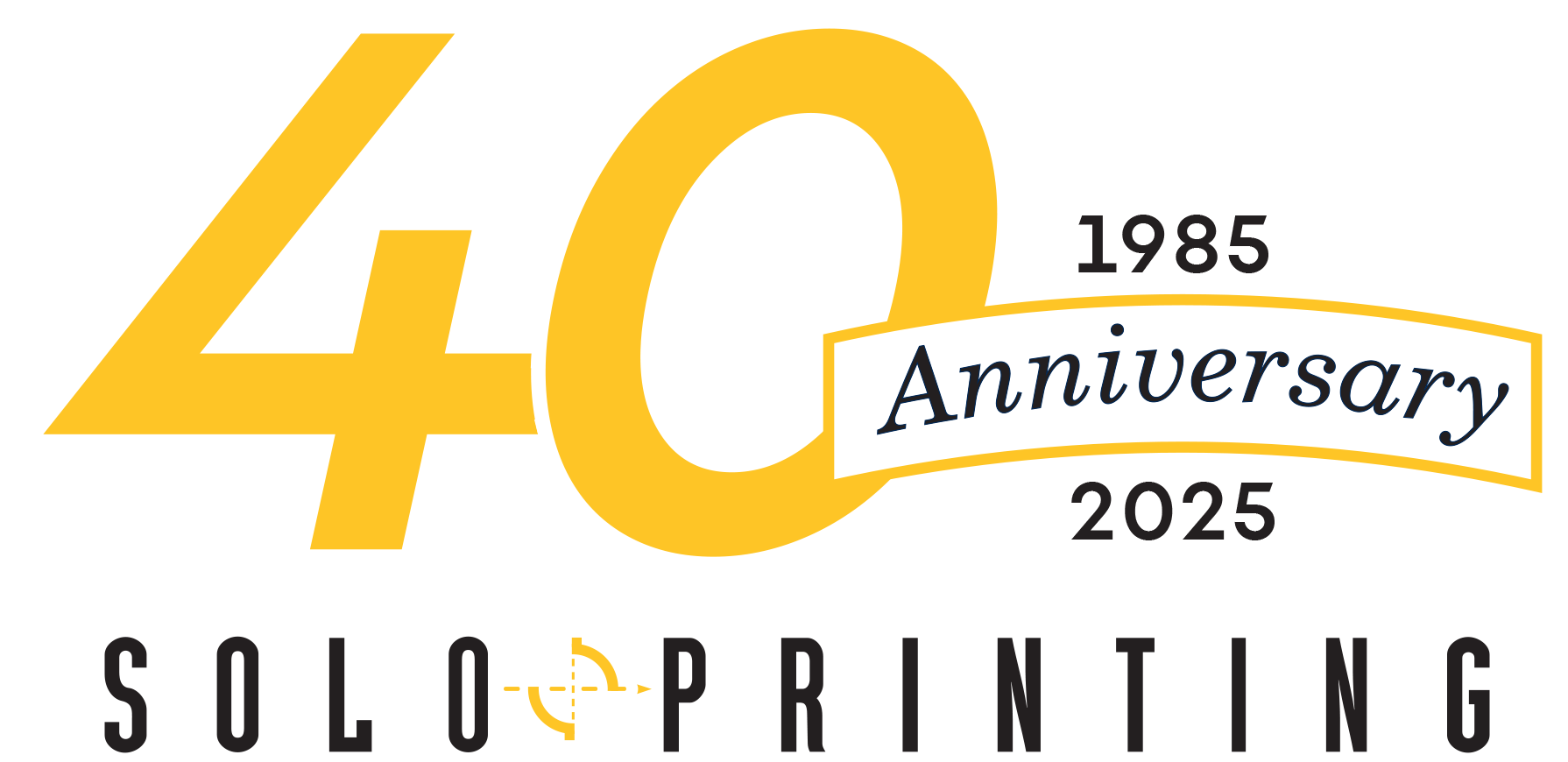Frequently Asked Questions
The default paper color for printing is usually white, so it is typically unnecessary to use white ink but if you are using colored paper and a graphic or image requires white, then opaque white ink may certainly be used.
The two main factors to consider are 1.) Quantity. and 2.) Deadlines
Digital
• More cost-effective for shorter runs
• Quicker turnaround time
• Ability to use Variable Data
Offset
• More cost-effective for larger runs
• Can exceed sheet size dimensions of 13” x 19” (Digital cannot)
• Wider color gamut which can be used to match exact colors
Depending on what your project needs, our Digital Press sizes range from 7.5” x 7.5” to 13” x 19”.
RGB stands for Red, Green, and Blue. This scale is most commonly used in monitors, televisions, scanners, and digital cameras. CMYK is cyan, magenta, yellow, and black – “full-color printing”.
When you combine all RGB light it creates white, whereas CMYK creates black. Subsequently, it is impossible for a printer to exactly reproduce a color that we see on our monitors. If possible, we recommend converting images or graphics in RGB to CMYK yourself, so you can adjust any changes before files are given to the printing company.
Why do colors differ when using offset printing versus digital printing?
Because the ink and toner mediums are different, the printed piece may have a slightly different result. Even though both types of printing use CMYK, the rasterization processes are different, which cause variations in color. In addition, if the file contains RGB elements, the different methods will produce varying results.
The Digital Front End (DFE) is the ‘software’ that takes the file, for example a PDF, and turns the file into a format that the print engine can ‘read’.
A digital press uses CMYK toners, so when a Pantone color is chosen, the press finds the closest possible match using the Cyan, Magenta, Yellow, and Black. Often times, the closest match is fine but if it’s a metallic ink or fluorescent color, the end result is noticeably different.
Ink density is the total percentages of Cyan, Magenta, Yellow, and Black. For example, an ink density of 300 means that the concentration and total percentages of CMYK are at 300%. At Solo Printing, we prefer ink density to not exceed 320.
Our preferred method is Hi-Resolution PDF with fonts and images embedded and saved in CMYK – please no RGB. We can also accept files in most graphic programs.
We prefer 300 dpi but will accept a minimum of 220 dpi.
Please note that pictures and graphics pulled from the internet are often low resolution (typically 72 dpi or 96 dpi). Try to avoid these, as they will appear very pixelated when printed.
Bleed is when the print area goes beyond the final trim line of the page thus allowing final print to “bleed” off the edge of the page.
Recommended bleed is 1/8 inch (.125) on all sides of the page or sheet
The live area is like a ‘Safe Zone’ four your printer. Basically, it is an area far away enough from the trim line that there is no risk of having text get cut off when trimming.
Live area may vary depending on type of stock, page count, and type of binding. We recommend a minimum of ¼ inch (.25), but for more specific questions about your project, give us a call and we’ll be sure to give you expert advice!
The primary coating choices are varnishes, aqueous coatings, and UV coatings. Each coating has its advantages and disadvantages and choosing which one is right for you largely depends on what you are printing as well as what type of paper you are printing on.
Contact one of our printing experts to help you choose the best coating for your project.
We try to make requesting a quote as easy as possible! You can either upload a file with product description, quantity and basic project specifications, or use our online form that covers all necessary information needed to properly quote your project.
Files may be submitted via email, FTP or online transfer site.
If you aren’t sure what these different platforms are, one of the experts at SoloPrinting can guide you through it with step-by-step instructions.
• Perfect Bound and Saddle-Stitch
• Wire-O and Plastic Coil
• Automatic Folding and Bundling
• Paper Bundle
• Kit Assembly
• Die Cutting and Gluing
• Tabbing
• Shrink-Wrapping
• Foil Stamping
• Ink Jetting
• Polybag
Whether you are looking for direct mail, single point, or multi-location, Solo’s worldwide Mailing & Fulfillment department can coordinate the delivery of your printed materials with ease. Our direct mail and fulfillment services are fully automated, ensuring high quality, quick processing, and maximum cost savings.
We guarantee your product arrives at its intended location on time.
LET’S GET STARTED
Let us work on your next project!

